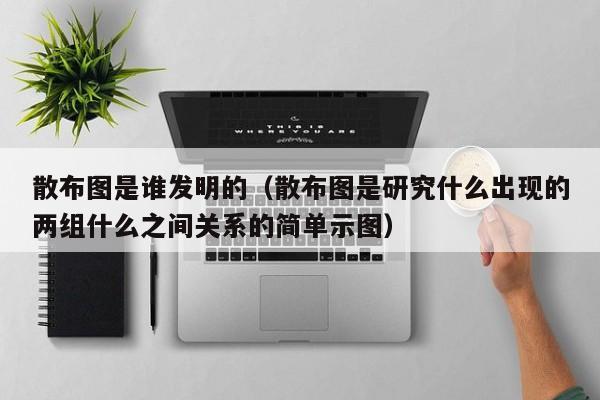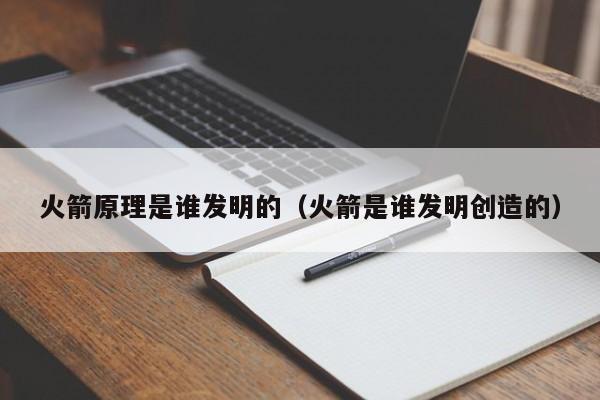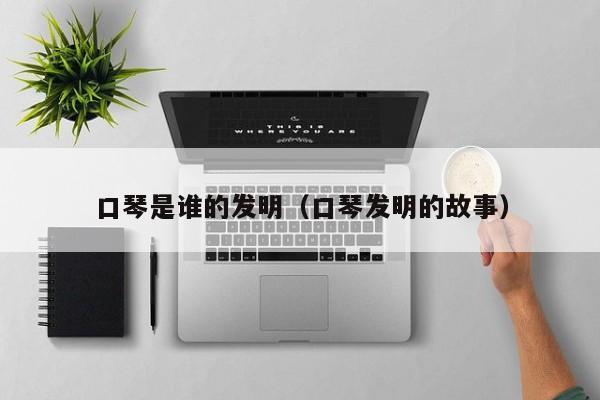今天给各位分享pox是谁发明的的知识,其中也会对pop是谁发明的进行解释,如果未能解决您的问答,可在评论区留言!
文章目录:
- 1、人类是怎样征服天花的?
- 2、p ox模型的提出者是谁
- 3、天花疾病源头是那?
- 4、牛痘发明于什么时候
- 5、谁消灭了天花?
- 6、蒸汽时代的科学发明
人类是怎样征服天花的?
问题一:人类是怎样征服天花的? 药,生存欲望
问题二:人类是怎样征服天花病的? 世界上最早是中国宋朝开始接种人痘来预防天花,后来由于战乱一度中断,到了明末才又开始实际应用。但是这种治疗方式由于是采用人类天花病毒,所以有很大的风险。后来这种技术被从俄国传到了欧洲,由于英国大规模养牛的便利条件和良好的科学环境,英国的医生Jenner将这种方法加以改进,将牛的天花病毒接种到人身上,让人类在安全的状态下获得牢固免疫力,这就是牛痘的由来。后来,这种技术广泛为全世界所接受,并且在1980年世界卫生组织宣布彻底消灭天花病毒。
目前还没有其他被征服的病毒,只有下一个计划征服的病毒:狂犬病病毒。
希望对你有帮助。
问题三:人类是怎样征服天花的 现在不需要征服了呀
已经有疫苗了
孩子在幼儿的时候打疫苗就可以了
打疫苗了,基本就不会得天花了
问题四:以前人类征服天花用了多久啊??? 三千年
问题五:天花是谁征服的 在人类历史上,天花曾肆虐人间。天迟搜花是由引起的,传染性强,高。我国早在宋朝时期(998-1022年)就已经采用接种人痘――即将轻症天花病人脓疱中的浆液码枣历(痘浆)接种于健康人的方法来预防天花。后来,逐渐传遍欧亚。
英国人EdwardJenner注意到,挤奶的女工经常与患(牛的一种天然轻型传染病)的奶牛接触,上会出现脓疱,却从不感染天花。Jenner从中受到启发发明了接种法。爱德华・琴纳(公元1749-1823年),英国医生。当时天花在欧洲广泛流行,18世纪死于此病者达1.5亿人以上,连法国一位国王也未幸免。琴纳立志解决这一重大医学难题。经过20多年刻苦研究,终于证实对人接种牛痘疫苗,能使人获得对天花的永久免疫能力,挽救了无数生命。他的成功还为人类开辟了一个新的领域――免疫学,他是在科学基础上征服传染病的先驱.1980年第33次庄严宣告:全世界已经消灭天花!
问题六:地球人是怎么知道天花病毒被消灭的? 据了解,天花病毒的一个致命弱点也使它注定成为首先被人类消灭的对象:人体是天花病毒的唯一宿主,也就是说,天花只有人感染,也只有人与人之间传播。这就为消灭天花提供了生物学前提。
18世纪的英国乡村医生爱德华・琴纳从古代中国的做法中得到启发,他进一步发现,英国乡村一些挤奶工的手上常常有牛痘,而有牛痘者全都没有患上天花。这个奇特现象使他大受启发。从1788年到1796年里,琴纳致力于种牛痘的观察和试验。1796年5月14日,他从一位挤牛奶女工手背上的牛痘里,吸取少量脓汁,接种在一名儿童身上。2个月后,他又给这名儿童接种天花病毒,结果该儿童并没有出现天花的症状。这次成功,使琴纳增强了接种牛痘的决心。1798年,他发表了著名论文《关于牛痘的原因及其结果的研究》,牛痘接种法正式诞生。琴纳以前,曾有人试种过牛痘,但没能作出科学的试验。
琴纳虽然发明了牛痘,但种牛痘也并不一帆风顺。在英国曾出现污蔑种牛痘的漫画。但是流言遮不住真理,牛痘法最终被世界各国接受。
琴纳将毕生大部分心血投入到种牛痘的研究中,英国议会为奖励他的贡献,出资两万英镑支持他的研究。琴纳去世后,英国伦敦为他立下雕像,使人们永远记住这位伟大而平凡的医生。1805年,在澳门的葡萄牙人赫微特将牛痘接种法介绍到中国,东印度公司的船医皮尔逊也向中国介绍了牛痘接种法。因为当时在中国种牛痘常常免费,而且牛痘法比人痘法更安全,因此越来越多的中国人接受了牛痘,牛痘从而替代了人痘。
在人类征服天花的历程中,中国发明的人痘接种法和琴纳发明的牛痘接种法,都为岩闹消灭天花发挥了作用。特别是广泛接种牛痘以后,天花发病率明显降低。20世纪70年代后,天花在中国停止传播,80年代,天花在全世界被消灭。这是迄今为止人类消灭的惟一的一种传染病。
问题七:天花第一次是怎样接种的? 接种牛痘是英国乡村医生琴纳发明的一种预防天花病毒的方法。
由于1980年5月8日的第三届世界卫生组织大会庄严宣布:危害人类达数千年之久的头号瘟神――天花已从地球上彻底根除了!全球消灭天花委员会确认,1977年10月在非洲索马里发现的一名天花患者,是人类传染病史上最后一例天花病案。
所以这以后出生人都没有再接种牛痘
琴纳――天花征服者
天花曾经是一种极为可怕的传染病,每四名天花病患者中,就有一人死亡,其余三人还会留下丑陋的痘痕。天花病的历史似乎与人类历史一样漫长,公元前1000多年保存下来的埃及木乃伊身上就有类似天花的痘痕。据说曾经强极一时的古罗马帝国,就是由于天花肆虐而国力日衰,最后走向灭亡的。这虽然言过其实,但也说明天花的危害之大。公元14世纪,天花在欧洲蔓延,死亡人数达1.5亿。天花就像一个可怕的妖魔,它不宽容任何人,上至皇帝贵族,下到平民百姓。若干世纪以来,天花就是死亡的代名词,人们谈“天花”色变。
天花有一个特点,就是一个人一生只患一次,如果天花患者能侥幸活下来;那么以后他再也不用担心会患上天花了。能不能让人一辈子连一次天花也不患呢?
在古代,我国人民就从防病治病的实践中,认识到天花的这个特点,并提出了“以毒攻毒”的思想。公元10世纪的宋真宗时代,“以毒攻毒”思想得到了具体应用,我国劳动人民发明了“种痘术”。他们取天花病人的痘痂,用棉花蘸着塞入健康人的鼻孔,这个健康人就会感染天花的某些轻微症状,但从此永远也不会患上天花了,这个过程叫“种痘”。我国古代采用“种痘”预防天花的方法,是世界医学史上一大创举,此法后来由我国传至亚洲其它国家,并经土耳其传至欧美。
“种痘术”的应用是中国人对免疫学的一大贡献,但遗憾的是,此后很长一段时间内,种痘术没有得到进一步发展,因为痘痂来源于人,因而限制了它的应用。直到18世纪,英国乡村医生琴纳(Edward jenner,1749~1822)发明了“种牛痘”,才使这一古老的“种痘术”大放异彩,实际上“种牛痘”是在“种人痘”的基础上发展而来的。
18世纪70年代,爱德华・琴纳对牛的一种疾病――牛痘发生了兴趣。所谓牛痘,就是一种温和的天花病,因为是在牛及其它牲畜体内发现的,故叫牛痘。
琴纳在他居住的乡村观察到一个有趣的现象:凡是和农场牲畜打交道的人,大多不得天花,而那些挤牛奶的女工,从未患过天花,这件事既让琴纳吃惊又让他纳闷。
琴纳决心解开这个疑团。他经过仔细观察后发现:那些挤牛奶女工,并不是没感染过牛痘病,只不过症状很轻,手上长了一两个水疱,有时连自己都不知道罢了。琴纳想,她们不染天花会不会和她们曾经感染过牛痘――一种轻微的天花有关呢?
琴纳又观察了很多年,尤其是中国的种痘术传入欧洲后对他启发很大,琴纳最终认定自己的想法是正确的。他认为挤奶女工曾经患过牛痘,这能使她们获得一种抵抗力,这种抵抗力能使这些挤奶工免遭天花的侵袭。他决心做一个实验来验证自己的思想。
1796年5月4日,琴纳从一个正患牛痘病的挤奶女工的身上取下一些水疱里的痘浆,接着把这些痘浆注射到一个名叫菲普士的8岁小男孩身上,这个男孩以前从未患过牛痘或天花。过了两天,男孩感到有些不舒服,但很快就好了。
两个月之后,琴纳确信,小菲普士身上的抵抗力已建立起来,现在的任务是:用实验证明小菲普士对天花有抵抗力。琴纳从正患天花的病人的痘痂上取出一些脓液,注射到小菲普士的身上。
一星期过去了,小菲普士没染上天花。
一个月过去了,小菲普士仍旧安然无恙。
琴纳悬着的心终于放下了。是的,琴纳成功......
问题八:人类用疫苗消灭哪种病毒 人类用疫苗消灭“天花”。
天花(Smallpox)是由天花病毒引起的一种烈性传染病,也是到目前为止,在世界范围被人类消灭的第一个传染病。天花是感染痘病毒引起的,患者在痊愈后脸上会留有麻子,“天花”由此得名。
人类征服天花的最关键的人物Edward Jenner,通过严谨思考和大胆的探索,终于发现人通过接种牛痘可以获得天花免疫能力这一规律,发明了低风险、高效率的牛痘接种技术。
问题九:天花疫苗是哪个科学家发明的 楼主,首先我表示我下面说的只是我的猜想,仅供你参考。:)
那位网友说的"挤牛奶的少女..."是事实,我们高中课本里有。
但是,我最近看了America:the story of us 这部记录片,疑问就来了:在第二集中记录了乔治?华盛顿在美国独立战争的一个冬天,为了抑制部队里迅猛地蔓延的天花,他冒了一个极大的风险。因为他们从印第安人那里学来了接种技术,于是他命令军医:在健康的士兵身上割出伤口,把死者身上活着的天花病毒涂在他们的伤口上。若病毒在人体内产生抗体的速度大于蔓延的速度,抗体就能抵抗病毒。他成功了,天花的死亡率从几千下降到了几十。
美国独立战争是1775-1783如果我没记错,而爱德华琴纳发明疫苗是这样来的:
1766年,英国青年爱德华・琴纳在一次偶然的机会里,听到一个挤奶的姑娘说,她今生是不会生天花了。原因是姑娘挤奶的奶牛生过痘疮,挤奶姑娘受了感染。而一旦感染过痘疮,一生就不会得天花病了。琴纳听了很奇怪。
10年后,琴纳成了一名乡村医生,并从家乡农民那里再次证实了那位挤奶姑娘的话。于是他突发奇想,何不让没得天花的人都感染一次痘疮呢?他把自己的想法告诉了老师,得到了老师的鼓励后,琴纳于1796年5月21日,首次在家乡为一个8岁的儿童接种了牛痘,这个儿童名字叫詹姆斯・菲普斯。琴纳首先找到一个刚感染牛痘的女孩,从她身上取一些痘疮的疮浆种在菲普斯的臂上。3天之内,菲普斯只是稍感不适外,便奔跑如初了。6个星期后,再为其接种天花病人的痘浆,菲普斯已没有任何症状了。这就证明了,他的体内已经有了免疫能力。从此,人类开始了征服天花的新纪元。
从以上两个资料我们可以看出,这种以毒攻毒,用抗 体抵抗病毒 是一种古老的方法。或许从古老的部落时代人们就发现了。但是如今的牛痘疫苗梗爱德华琴纳提、实验证明然后推广于全世界的。
问题十:古代的天花是什么病呀 古代人实际上对天花没有什么准确的认识,从名字就可以看出来。当时还以为是上天降给人类的惩罚,是一种不祥的预兆。所以,得天花的人,好了之后很多都不为世人接纳。
p ox模型的提出者是谁
海德弗里茨_海德。
1958年,心理学家弗里茨_海德提出了态度转变理论中的P-O-X模型。
P代表认知主体,O为与P发生联系的另一雹粗毕个人或团体凳蚂,X则为P与O发生联系的另源芹一个任意对象。
天花疾病源头是那?
天花是第一种,也是唯一一种被人类消灭的烈性传染病。“不论从哪方面来说,全历燃球范围内扑灭天花都应该算是一项惊人的成就。”——支撑这句分量十足的评语的,是真实发生的事迹——那是人类与天花抗争的史诗般的历程。历烂帆肢雹1980年,世界卫生组织宣布天花病毒灭绝,之后,天花疫苗的强制接种在全世界范围内停止。现在地球上生活的人们半数以上没见过天花病,这不仅仅是天花疫苗发明人琴纳(Edward Jenner,1749、5-1823、1)个人的成就,更是科学的胜利,是人类搁置争议通力合作所创造的伟业。

牛痘发明于什么时候
18世纪的欧洲是天花十分盛行的年代。当时的英国乡间流行一个民间传说:一个人只要曾橡数经染上牛痘,便不会再染上天花。挤牛奶的女工多数都曾感染牛痘,亦的确很少患上天花。詹纳意会到倘若传说属实,牛痘是跟天花有关,那么以牛痘接种代替天花接种将更为理想。1796年5月14日,詹纳进行实验。他以接种天花的方法,替一名八岁男孩詹姆士·菲利浦接种牛痘。男孩染上牛痘后,六星期内康复。之后詹纳再替男孩接种天花梁含首,结果男孩完全没有受感染,证明了牛痘能令人对天花产生免疫。
詹纳称他的方法为“预防接种”(Vaccination),Vacca 是拉丁文中“牛”的意思。之后他在1798年出版关于预防接种办法的书:《关于牛痘预防接种的原因与后果》(《An Inquiry into the Causes and Effects of the Variolae Vaccinae, a Disease Known by the Name of Cow Pox》),并首次在书中使用了病毒老升(virus)一字。詹纳认识到预防接种可能达到的最终结果。他希望有朝一日可以令天花在地球上绝迹。他的梦想最后在全球的努力合作下取得成功,1970年代天花病终于在地球消失。
谁消灭了天花?
这是唯一一种消灭的传染病,曾经相当厉害.是天花病毒引起的烈性传染病,死亡率很高。但经推广牛痘接种和数年的世界性监测,世界卫生组织于1980年正式宣布天花已在全世界消灭。但需注意重新出现。
英国内科专家爱德华·詹纳发明和普及了一种预防可怕的天花病的方法──接种疫苗法。
今天,应该感谢詹纳,天花在地球上真正被消除殆尽了。此时我们容易忘却它在早期世纪里造成了蚕食鲸吞人生那着实可怕的情景。天花族灶闹的传染性如此之大,以致大多数的欧洲居民在一生的某个时候确实都要染上此病;它具有的毒性如此之大,以致足以使百分之一、二十的患者丧生。纵有幸存者,其中仍有百分之十到百分之十五的人终生留有严重的症根。当然天花不只限于欧洲,它还在北美、印度、中国和世界许多其它地区肆意猖獗,在每个地区儿童都是最常见的受害者。
人们为找出预防天花的可靠方法进行过多年的努力。在很长一个时期里,人们知道患天花病的幸存者从此具有了免疫力,不会再患第二次天花病。在东方,这种观察的结果导致出一种接种方法,即用从患有轻度天花症的人体内取出病毒给健康人接种,其目的是为了让接过种的人只染上轻微的天花症,待恢复后获得免疫力。
这种方法在八世纪初期由玛丽·沃特利·蒙塔古女士引入英国,并且在詹纳许多年以前就在英国得以普遍使用。事实上詹纳自己在八岁的时候就接种过天花痘。但是这种直率的预防方法有一种严重的缺陷:有相当数量的接过天花痘的人没能患上轻微的天花病,而是患上了恶性天花病,给自己留下了累累的痘根。实际上就是在接种期的约百分之二的时间里会出现天花的致命性发作。因此,寻求一种更好的预防方法显然是迫在眉睫。
詹纳于1749年出生在英国格洛斯特郡伯克利小镇上。十二岁时他跟一位内科医生学徒,后来在一家医院里边学解剖边工作。1792年在圣·安德鲁大学获得医学学位。他四十五、六岁时已成为格洛郡内的一位有名的内科和外科医生。
詹纳熟悉他所在地区的奶场女工和农民当中的一种公认的说法:牛症是牛患的一种轻度病,但也可以传染给人,人若传染上牛痘,就再也不会得天花病(牛痘本身对人来说没有危险,虽然其症状与极轻度的天花病有点相似)。詹纳认识到如果农民的说法是正确的话,那么给人种牛痘就是使之获得天花免疫的一种安全的方法。他对这个问题进行了仔细的调查研究,1796年他相信农民的说法确实正确,因此他决定直接对它加以检验。
1796年5月,詹纳用从一个奶场女工手上的牛痘脓胞中取出来的物质给一个八岁的男孩詹姆斯·菲普斯注射。如事先所料,这孩子患了牛痘,但很快就得以恢复。詹纳又给他种天花痘,果不出所料兆罩,孩子没有出现天花病症。
经过进一步的调查后,詹纳在一本薄书《天花疫苗因果之调查》里公布了他的结果,他于1798年非正式地发表了这本书。就是这本书是接种方法被迅速采用的主要原因。随后詹纳又发表了另外五篇论接种的文章。他为人们接受接种而长年旰衣宵食,四处宣传。
接种法迅速在英国传开了,不久就在不列颠陆军和海军中强制实行。最终它被全世界大部分地区所采用。
詹纳无私地把他的接种方法奉献给世界,无意从中取利。但是1802年英国议会为了对詹纳表示感辩肢谢,授予他一笔一万英镑的奖金,几年后又追加一笔两万英镑的奖金。他成了世界名人,得到许多荣誉和奖赏。詹纳结过婚,有三个孩子。他于1823年初在他的家乡伯克利逝世,终年七十三岁。
我们看到,詹纳并没有发明患牛瘟病会带来天花免疫的思想,他是从别人那里听到的。事实上在詹纳成功之前,有几个人就曾被有意识地接种过牛痘。
虽然詹纳不是一位有惊天动地的创新思想的科学家,但是为人类利益做出这样杰出贡献的人确是绝无仅有。他通过调查、实验和写作,把一种医学界忽视的民间说法转变成了拯救无数人生命的标准方法。虽然詹纳的方法只用于对一种疾病的预防,但此病是危害人类的一种强敌,非同小可。他的同代人和后来的每一代人所给予他的荣誉,他完全受之无愧。
蒸汽时代的科学发明
1701 Jethro Tull invents the seed drill.
1709 Bartolomeo Cristofori invents the piano.
1711 Englishmen, John Shore invents the tuning fork.
1712 Thomas Newcomen patents the atmospheric steam engine.
1717 Edmond Halley invents the diving bell.
1722 French C. Hopffer patents the fire extinguisher.
1724 Gabriel Fahrenheit invents the first mercury thermometer.
1733 John Kay invents the flying shuttle.
1745 E.G. von Kleist invents the leyden jar, the first electrical capacitor.
1752 Benjamin Franklin invents the lightening rod.
1755 Samuel Johnson publishes the first English language dictionary on April 15th after nine years of writing. In the preface Samuel Johnson wrote, "I am not so lost in lexicography as to forget that words are the daughters of earth, and that things are the sons of heaven."
1757 John Campbell invents the sextant.
1758 Dolland invents a chromatic lens.
1761 Englishmen, John Harrison invents the navigational clock or marine chronometer for measuring longitude.
1764 James Hargreaves invents the spinning jenny.
1767 Joseph Priestley invents carbonated water - soda water.
1768 Richard Arkwright patents the spinning frame.
1769 James Watt invents an improved steam engine.
1774 Georges Louis Lesage patents the electric telegraph.
1775 Alexander Cummings invents the flush toilet.
Jacques Perrier invents a steamship.
1776 David Bushnell invents a submarine.
1779 Samuel Crompton invents the spinning mule.
1780 Benjamin Franklin invents bi-focal eyeglasses.
Gervinus invents the circular saw.
1783 Louis Sebastien demonstrates the first parachute.
Benjamin Hanks patents the self-winding clock.
Joseph Michel Montgolfier and Jacques Etienne Montgolfier invent the hot-air balloon.
Englishmen, Henry Cort invents the steel roller for steel production.
1784 Andrew Meikle invents the threshing machine.
Joseph Bramah invents the safety lock.
1785 Edmund Cartwright invents the power loom.
Claude Berthollet invents chemical bleaching.
Charles Augustus Coulomb invents the torsion balance.
Blanchard invents a working parachute.
1786 John Fitch invents a steamboat.
1789 The guillotine is invented.
1790 The United States issued its first patent to William Pollard of Philadelphia for a machine that roves and spins cotton.
1791 John Barber invents the gas turbine.
Early bicycles invented in Scotland.
1792 William Murdoch invents gas lighting.
The first ambulance.
1794 Eli Whitney patents the cotton gin.
Welshmen, Philip Vaughan invents ball bearings.
1795 Francois Appert invents the preserving jar for food.
1796 Edward Jenner creates a smallpox vaccination.
1797 Wittemore patents a carding machine.
A British inventor, Henry Maudslay invents the first metal or precision lathe.
1798 The first soft drink invented.
Aloys Senefelder invents lithography.
1799 Alessandro Volta invents the battery.
Louis Robert invents the Fourdrinier Machine for sheet paper making.
1800 Frenchmen, J.M. Jacquard invents the Jacquard Loom.
Count Alessandro Volta invents the battery
1804 Freidrich Winzer (Winsor) was the first person to patent gas lighting.
Richard Trevithick, an English mining engineer, developed the first steam-powered locomotive. Unfortunately, the machine was too heavy and broke the very rails it was traveling on.
1809 Humphry Davy invents the first electric light - the first arc lamp.
1810 German, Frederick Koenig invents an improved printing press.
Peter Durand invents the tin can.
1814 George Stephenson designs the first steam locomotive.
The first plastic surgery is performed in England.
German, Joseph von Fraunhofer invents the spectrocope for the chemical analysis of glowing objects.
Joseph Nicéphore Niépce was the first person to take a photograph. He took the picture by setting up a machine called the camera obscura in the window of his home in France. It took eight hours for the camera to take the picture.
1815 Humphry Davy invents the miner's lamp.
1819 Samuel Fahnestock patents a "soda fountain".
René Laënnec invents the stethoscope.
1823 Mackintosh (raincoat) invented by Charles Mackintosh of Scotland.
1824 Professor Michael Faraday invents the first toy balloon.
Englishmen, Joseph Aspdin patents Portland cement, the modern building material.
1825 William Sturgeon invented the electromagnet.
1827 John Walker invents the modern matches.
Charles Wheatstone invents the microphone.
1829 American, W.A. Burt invents a typewriter.
Frenchmen, Louis Braille invents braille printing.
William Austin Burt patents a typographer, a predecessor to the typewriter.
1830 Frenchmen, B. Thimonnier invents a sewing machine.
1831 American, Cyrus H. McCormick invents the first commercially successful reaper.
Michael Faraday invents a electric dynamo.
1832 Englishmen, Louis Braille invents the stereoscope.
1834 Henry Blair patents a corn planter, he is the second black person to receive a U.S. patent.
Jacob Perkins invents an early refrigerator (really an ether ice machine).
1835 Englishmen, Henry F. Talbot invents Calotype photography.
Solymon Merrick patents the wrench.
Englishmen, Francis Pettit Smith invents the propeller.
Charles Babbage invents a mechanical calculator.
1836 Francis Pettit Smith and John Ericcson co-invent the propellor.
Samuel Colt invented the first revolver.
1837 Samuel Morse invents the telegraph.
English schoolmaster, Rowland Hill invents the postage stamp.
1838 Samual Morse invents Morse Code.
I839 American, Thaddeus Fairbanks invents platform scales.
American, Charles Goodyear invents rubber vulcanization.
Frenchmen, Louis Daguerre and J.N. Niepce co-invent Daguerreotype photography.
Kirkpatrick Macmillan invents a bicycle.
Welshmen, Sir William Robert Grove conceives of the first hydrogen fuel cell.
1840 Englishmen, John Herschel invents the blueprint.
1841 Samuel Slocum patents the stapler.
1842 Joseph Dart builds the first grain elevator.
1843 Alexander Bain of Scotland, invents the facsimile.
1844 Englishmen, John Mercer invents mercerized cotton.
1845 American, Elias Howe invents a sewing machine.
Robert William Thomson patents the first vulcanised rubber pneumatic tire.
1846 Dr. William Morton, a Massachusetts dentist, is the first to use anesthesia for tooth extraction.
1847 Hungarian, Ignaz Semmelweis invents antisceptics.
1848 Waldo Hanchett patents the dental chair.
1849 Walter Hunt invents the safety pin.
1850 Joel Houghton was granted the first dishwasher patent in 1850. The machine was made of wood and required you to hand-turn a wheel that caused water to splash on the dishes. Houghton's machine barely worked. The first practical dishwasher was invented by a woman named Josephine Cochran in 1886. Dishwashers, however, did not begin appearing in homes until the 1950s.
1851 Isaac Singer invents a sewing machine.
1852 Jean Bernard Léon Foucault invents a gyroscope.
Henri Giffard builds an airship powered by the first aircraft engine - unsuccessful design.
1853 George Cayley invents a manned glider.
1854 John Tyndall demonstrates the principles of fiber optics.
1855 Isaac Singer patents the sewing machine motor.
Georges Audemars invents rayon.
1856 Louis Pasteur invents pasteurisation.
1857 George Pullman invents the Pullman Sleeping Car for train travel.
1858 Hamilton Smith patents the rotary washing machine.
Jean Lenoir invents an internal combustion engine.
1861 Elisha Otis patents elevator safety brakes, creating a safer elevator.
Pierre Michaux invents a bicycle.
Linus Yale invents the Yale lock or cylinder lock.
1862 Dr. Richard Gatling patents the machine gun.
Alexander Parkes invents the first man-made plastic.
1866 Alfred Nobel invents dynamite.
J. Osterhoudt patents the tin can with a key opener.
Englishmen Robert Whitehead invents a torpedo.
1867 Christopher Scholes invents the first practical and modern typewriter.
1868 George Westinghouse invents air brakes.
Robert Mushet invents tungsten steel.
J P Knight invents traffic lights.
1872 J.S. Risdon patents the metal windmill.
A.M. Ward issues the first mail-order catalog.
1873 Joseph Glidden invents barbed wire.
1874 American, C. Goodyear, Jr. invents the shoe welt stitcher.
1876 Alexander Graham Bell patents the telephone.
Nicolaus August Otto invents the first practical four-stroke internal combustion engine.
Melville Bissell patents the carpet sweeper.
1877 Thomas Edison invents the cylinder phonograph or tin foil phonograph.
Eadweard Muybridge invents the first moving pictures.
1878 Sir Joseph Wilson Swan was the first person to invent a practical and longer-lasting electic lightbulb.
1880 The British Perforated Paper Company invents a form of toilet paper.
Englishmen, John Milne invents the modern seismograph.
1881 Alexander Graham Bell invents the first crude metal detector.
David Houston patents the roll film for cameras.
Edward Leveaux patents the automatic player piano.
1884 George Eastman patents paper-strip photographic film.
Frenchmen, H. de Chardonnet invents rayon.
Lewis Edson Waterman invents the first practical fountain pen.
James Ritty invents the first working, mechanical cash register.
Charles Parson patents the steam turbine.
1885 Harim Maxim invents the machine gun.
Karl Benz invents the first practical automobile to be powered by an internal-combustion engine.
Gottlieb Daimler invents the first gas-engined motorcycle.
1886 Josephine Cochrane invents the dishwasher.
Gottlieb Daimler builds the world's first four-wheeled motor vehicle.
John Pemberton invents Coca Cola.
1887 German, Heinrich Hertz invents radar.
Rowell Hodge patents barbed wire.
Emile Berliner invents the gramophone.
F.E. Muller and Adolph Fick invent the first wearable contact lenses.
1888 Marvin Stone patents the spiral winding process to manufacture the first paper drinking straws.
John Boyd Dunlop patents a commercially successful pneumatic tire.
Nikola Tesla invents the AC motor and transformer.
1889 Joshua Pusey invents the matchbook.
Sir James Dewar and Sir Frederick Abel co-invent Cordite - a type of smokeless gunpowder.
1891 Jesse W. Reno invents the escalator.
1892 Rudolf Diesel invents the diesel-fueled internal combustion engine.
Sir James Dewar invents the Dewar flask or vacuum flask.
1893 American, W.L. Judson invents the zipper.
Edward Goodrich Acheson invents carborundum.
1895 Lumiere Brothers invent a portable motion-picture camera, film processing unit and projector called the Cinematographe.
Lumiere Brothers using their Cinematographe are the first to present a projected motion picture to an audience of more that one person.
1896 American, H. O'Sullivan invents the rubber heel.
1898 Edwin Prescott patents the roller coaster.
Rudolf Diesel receives patent #608,845 for an "internal combustion engine" the Diesel engine.
1899 I.R. Johnson patents the bicycle frame.
J.S. Thurman patents the motor-driven vacuum cleaner.
pox是谁发明的的介绍就聊到这里啦,感谢您花时间阅读本站内容,更多关于pop是谁发明的、pox是谁发明的的信息别忘了在本站进行查找喔。
版权声明
本文仅代表作者观点,不代表百度立场。
本文系作者授权百度百家发表,未经许可,不得转载。











